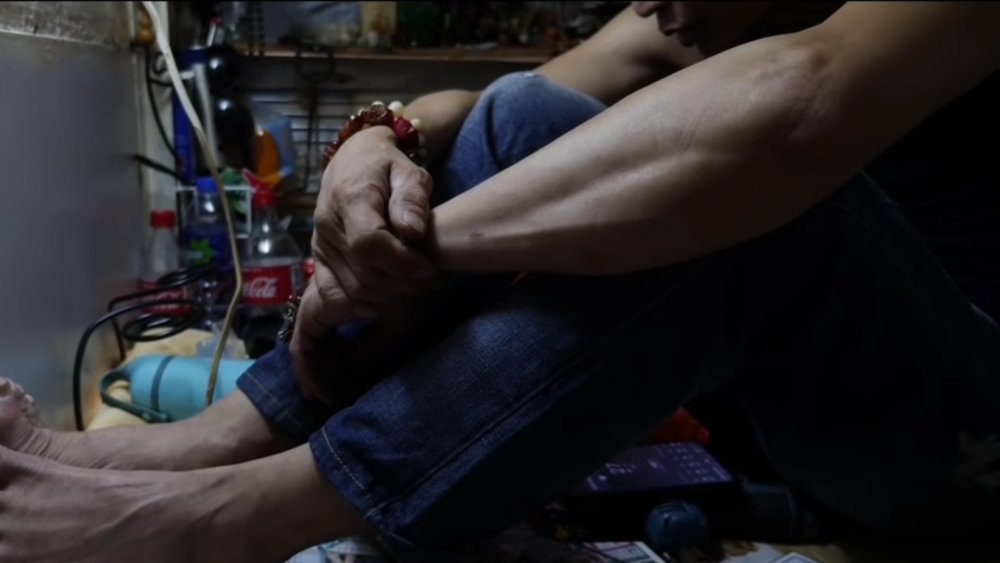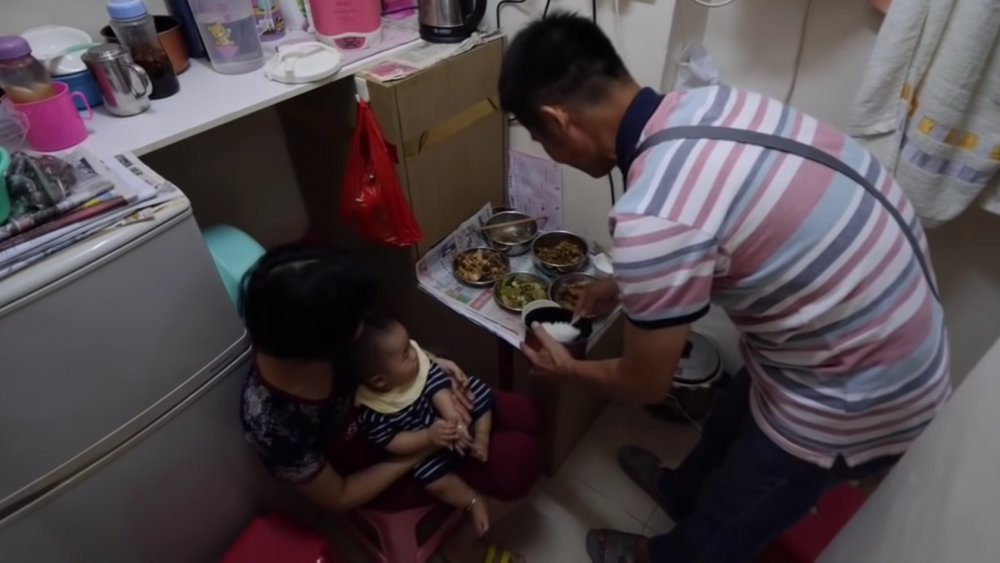The Tragic Truth Of Hong Kong's 'Coffin Cubicles'
In the 1970s, Hong Kong became an economic mecca. As the BBC details, this period of prosperity followed a time of hostility. Back then, the British controlled the city, which became a haven for refugees escaping the Chinese Civil War in the 1940s. Mao Zedong and his fanatical army would transform the rest of China into a dystopian dictatorship. Meanwhile, Hong Kong developed a tradition of fighting economic injustice and political oppression. For instance, in 1967, simmering tensions over low pay, abject poverty, and government corruption boiled over into anti-British riots, according to the Hong Kong Free Press. Back then, Communists fomented the violence, but ironically, decades later they would effectively become the British.
When China regained control of Hong Kong in 1997, Hong Kong gained partial autonomy as part of the deal. However, over the years, the Communist mainland has increasingly encroached on the city's liberties, prompting fed-up residents to bite the hand that fetters them. Since 2014, angry Hong Kongers have periodically launched pro-democracy demonstrations. But the hunger for freedom isn't the only thing fueling the unrest. The plight of many citizens echoes the dismal conditions that stoked the 1967 riots. Back then, destitute Hong Kongers lived in shanties. Nowadays, they reside in "coffin cubicles."
There's no space like home
The South China Morning Post reports that in 2015, a staggering 200,000 people lived in 88,000 subdivided building units in Hong Kong. Some people cram their bodies and belongings into a space that measures a scant 20 square feet, according to Business Insider. One 39-year-old resident, identified only as "Tony," had a coffin cubicle measuring just 15 square feet. His claustrophobic quarters were part of a 500 square foot apartment he shared with 21 other people. Others sleep in similarly cramped cages. Most makeshift flats lack windows, and diseases spread easily. It's also easy to see how such an abysmal situation could contribute to civil unrest.
In 2014, Guardian contributor Toby Carroll argued that the underlying driver of Hong Kong's pro-democracy protests was overwhelming wealth inequality. Carroll noted that in 2013, an estimated 1.3 million residents, nearly 20 percent of the city's population, lived below the poverty line. In 2019, Deutsche Bank ranked major cities across 42 countries based on different forms of affordability and overall quality of life. It found that Hong Kong had the most expensive apartments on Earth, with a mid-range two bed-room apartment cost over $3,000 a month. Unfortunately, for many struggling citizens, life barely qualifies as living.

